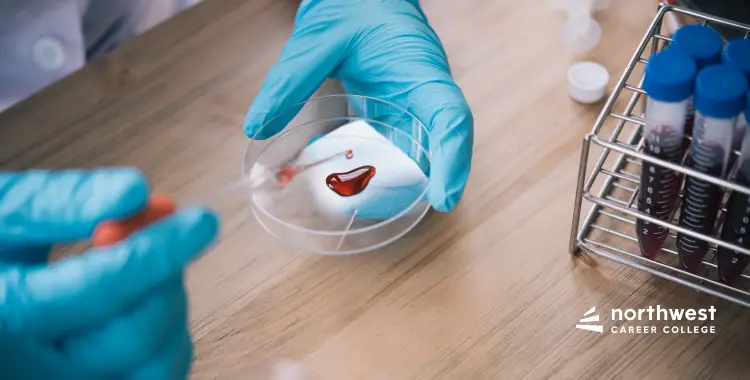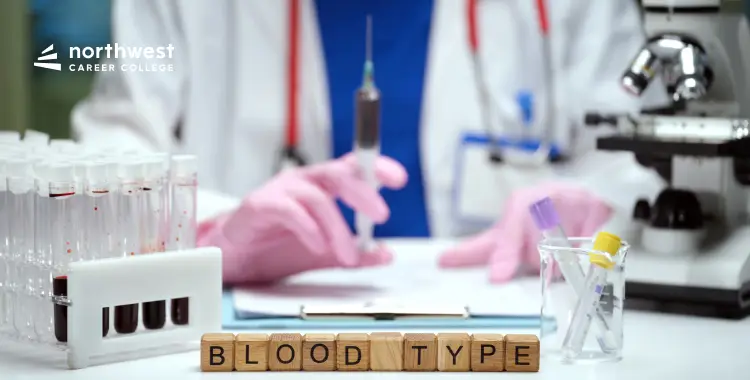Bloodborne Pathogens: What Every Phlebotomy Student Needs to Know
- October 31, 2025
- 891 views
- 3 min read
If you’re training to become a phlebotomist, you’re stepping into a role that involves more than just drawing blood—you’re taking on a responsibility to protect yourself and your patients.
One of the most important things to learn early on is handling bloodborne pathogens. These invisible threats, like HIV, Hepatitis B, and Hepatitis C, are part of the reality in any healthcare field. It might not sound very comforting initially, but staying safe becomes second nature with the proper knowledge and habits.
In this guide, we’ll explain the basics of bloodborne pathogens, the safety precautions you should take daily, and how to meet OSHA standards confidently.

Table of Contents
What are Bloodborne Pathogens?
Bloodborne germs are small germs found in blood and can infect individuals. They are spread when blood from an infected person enters another individual’s body, most often through a cut, a needle, or broken skin.
Some of the most common bloodborne pathogens are:
- HIV stands for Human Immunodeficiency Virus
- Hepatitis B can lead to liver injury.
- Hepatitis C also damages the liver.
These germs do not have to be seen, but they can be potential dangers if introduced into your body. That is why phlebotomists and other healthcare workers must exercise rigorous safety precautions when handling blood.
Why Phlebotomy Students Need to Study Them
As a phlebotomy student, you will handle blood by collecting samples and transmitting them to the lab. You’ll be near blood daily. Being a professional in this field requires understanding how to avoid contact with hazardous pathogens. This knowledge is essential for your safety and the safety of your patients and colleagues.
The Spread of Bloodborne Pathogens
Learning the facts and basics is the key to being safe and preventing these germs from spreading. Bloodborne germs tend to spread in these ways:
- Needle stick injury – poking yourself by mistake using a used needle
- Cuts or open wounds – if infected blood touches your broken skin
- Splashes to the eyes, nose, or mouth – if blood sprays unintentionally during a procedure
- Improper cleaning – failing to clean tools or surfaces properly
Proper training, protective equipment, and safe practices can prevent these germs from ever coming near you.
Easy Ways to Stay Safe
Safety in phlebotomy is a team effort. You will learn to practice universal precautions—treating all blood as potentially infected, even when the patient appears healthy.
Here are a couple of simple rules to observe:
- Always wear gloves when handling needles or blood
- Never reuse needles — you should have a new one for every individual
- Dispose of used needles in a designated sharps receptacle immediately
- Wash your hands before and after every patient
- Clean your tools and workspace frequently using a disinfectant
- Wear a face mask or goggles when splashing is involved
Knowing how to handle blood properly is essential for your health and prepares you to be a competent healthcare professional. Employers seek staff who can work safely and follow guidelines.
Are You Ready to Begin Your Phlebotomy Career?
Northwest Career College is here to help you learn everything you need to, using a slow and gentle approach anchored by qualified instructors.
You do not have to spend years in school. You can graduate from Northwest Career College in as little as 3 months and start working in labs, clinics, and healthcare offices. You’ll have classroom instruction, hands-on training, and all your needs covered — including affordable payment options.
Enroll today in our Phlebotomy Technician Program and begin a thriving career in the healthcare industry.





